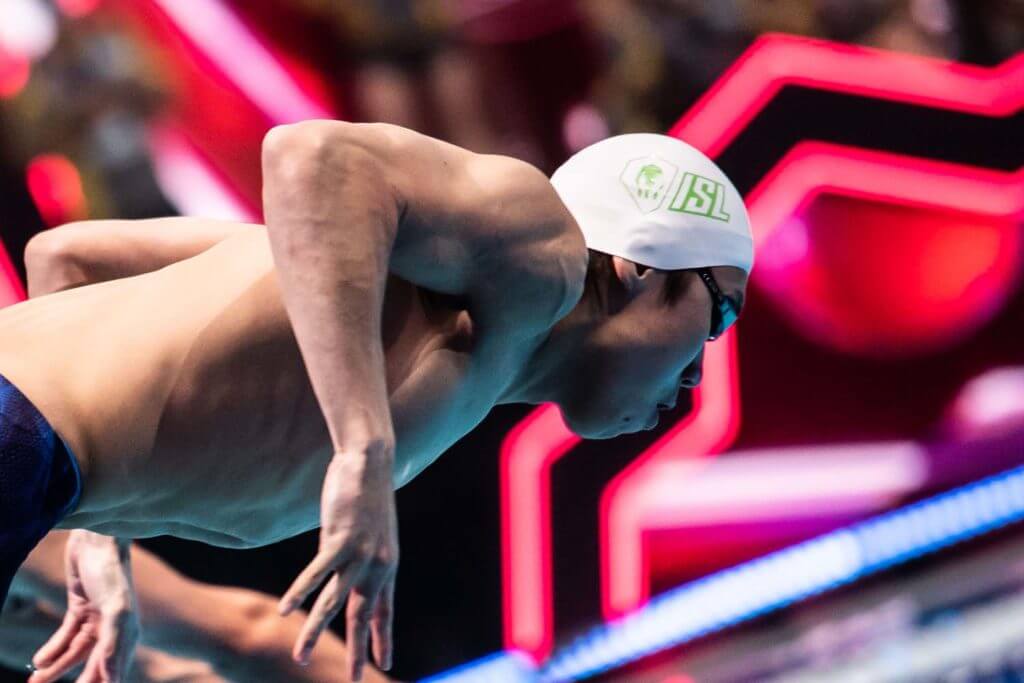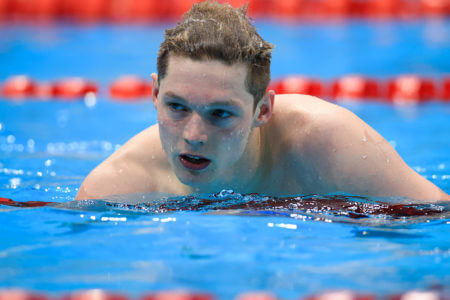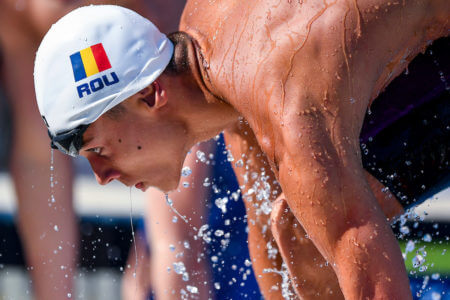Ian Thorpe Said They Were Wrong; Now, Athletes Attacking the 200 Freestyle

Editorial content for the 2021 Tokyo Olympic Games coverage is sponsored by GMX7.
See full event coverage. Follow GMX7 on Instagram at @GMX7training #gmx7

Ian Thorpe Said They Were Wrong; Now, Athletes Attacking the 200 Freestyle
Last year, former 200 freestyle world-record holder and 2004 Olympic gold medalist Ian Thorpe told Brett Hawke on a podcast that “everyone in the world is swimming the 200 freestyle the wrong way.” Thorpe explained that the event had not gotten faster in years because swimmers were not willing to be aggressive and take the race out hard over the first 100 meters. That meant that since Yannick Agnel won Olympic gold in 2012 in 1:43.14, no one had eclipsed Thorpe’s best time of 1:44.06 from 2001.
“You cannot swim easily for 150 meters and then go into a sprint. I don’t care who your coach is who is telling you that,” Thorpe said. He figured that most swimmers needed to be out under 51 seconds at the 100-meter mark to be able to post a 1:44-low and give themselves a shot at an Olympic medal, perhaps even gold. If not, he said, “You are going to limit what time you can potentially do.”
In 2019, only two swimmers went under 1:45 in the men’s 200 freestyle: Lithuania’s Danas Rapsys, who touched first in the World Championships final before being disqualified for a false start, and China’s Sun Yang, who ended up receiving the gold medal at those Worlds. Sun will miss the Olympics and the next three years because of anti-doping violations, and Rapsys has mostly been quiet in 2021, but the event has finally shown significant signs of life. Five swimmers have broken 1:45 in 2021, and you can see some of them taking Thorpe’s advice to heart.

Duncan Scott — Photo Courtesy: Georgie Kerr, British Swimming
The top two swimmers in the world both hail from Great Britain after Duncan Scott won the event at the nation’s Olympic Trials in 1:44.47 and Tom Dean took second in 1:44.58. And both men achieved those results by following Thorpe’s advice perfectly—Scott was out in 50.25, one of the fastest 100-meter splits ever, and Dean was 50.57 at the halfway point. For Scott, compare that swim to the 2019 World Championship final, when he went out in 51.47 and finished in 1:45.63, earning an equal bronze medal thanks to Rapsys’ DQ. But in his Trials swim this year, he went out more than a second faster and was able to hold on for the same finish.
The third-ranked 200 freestyler this year is Japan’s Katsuhiro Matsumoto at 1:44.65, and Russia’s Martin Malyutin is ranked fourth at 1:44.79 after winning gold at the European Championships over Scott, Dean and Rapsys. Compare their splits year to year.
Matsumoto, 2019: split 50.91; final 1:45.22
Matsumoto, 2021: split 50.42; final 1:44.65
Malyutin, 2019: split 51.93; final 1:45.63
Malyutin, 2021: split 51.28; final 1:44.79

David Popovici — Photo Courtesy: deepbluemedia
A pair of teenagers are ranked next in the world rankings, Korea’s Hwang Sunwoo at 1:44.96 and Romania’s David Popovici at 1:45.26. Hwang’s splits from his race were not available, but Popovici employed the aggressive style as well. In his best race from the European Junior Championships earlier this month, Popovici went for broke early and flipped in 50.70 at the 100-meter mark. He might not have the back-half figured out yet, but he’s willing to go for it, and that puts him in the race. Even the top American hope in the 200 free, Kieran Smith, went out in 51.14 on the way to his winning time of 1:45.29 at Olympic Trials, and he also excels in the 400-meter distance, so you would expect an especially strong finish from Smith.
The trade-off to an aggressive racing strategy in the 200 free, Thorpe admitted, is some discomfort as fatigue sets in down the stretch. “It’s about putting more speed into the earlier part of it, and it’s about making yourself hurt more,” he said on the podcast. “You have to be willing to deal with the pain that’s going to exist for the last 50 meters. That pain should have started before then.”
The counter-example here is Rapsys, who typically begins slowly but has a massive finish. On multiple occasions, he has split 26.0 on the last length, much faster than any of his competitors, and he has the top-ranked 200 freestyle performance during the Olympic qualifying period with his 1:44.38 from 2019. But this year, his best is 1:45.72, so it is a wild card as to what sort of form he will bring to Tokyo.
But for almost everyone else in the field in the men’s 200 freestyle, we know what to expect—aggressive racing, the correct style for the 200 free that Thorpe recommended more than a year ago. With Scott, Dean and Matsumoto leading the way, the best swimmers are now swimming the race correctly, just in time for the Tokyo Olympics.




